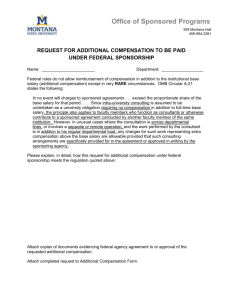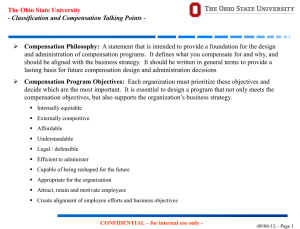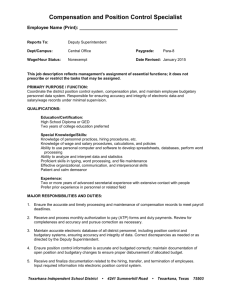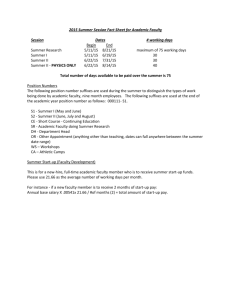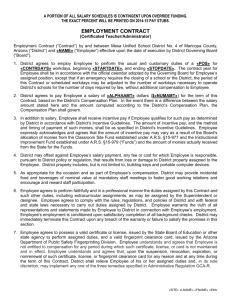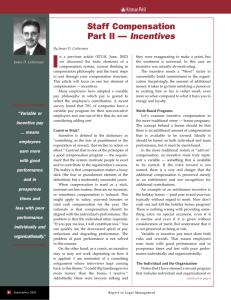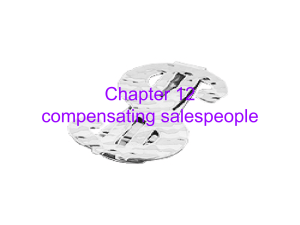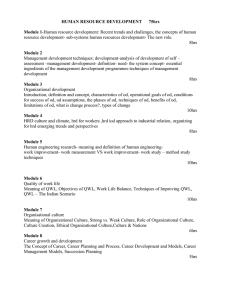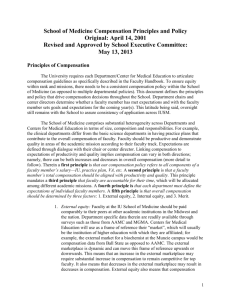How to find and Keep the Best Employees Part Two
advertisement
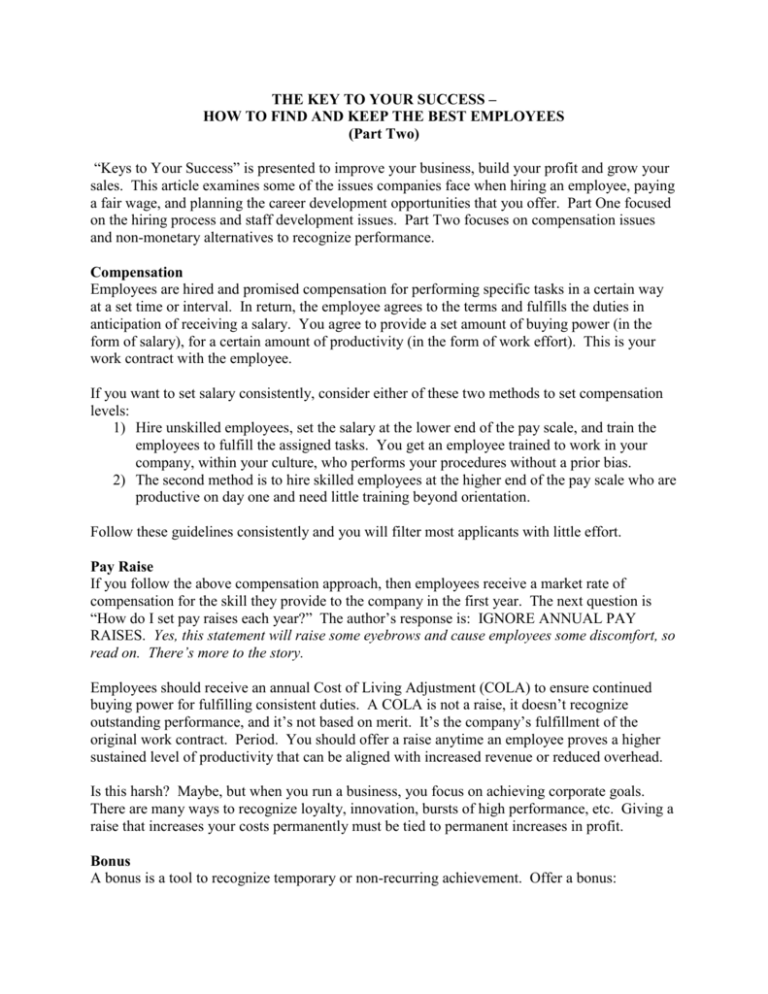
THE KEY TO YOUR SUCCESS – HOW TO FIND AND KEEP THE BEST EMPLOYEES (Part Two) “Keys to Your Success” is presented to improve your business, build your profit and grow your sales. This article examines some of the issues companies face when hiring an employee, paying a fair wage, and planning the career development opportunities that you offer. Part One focused on the hiring process and staff development issues. Part Two focuses on compensation issues and non-monetary alternatives to recognize performance. Compensation Employees are hired and promised compensation for performing specific tasks in a certain way at a set time or interval. In return, the employee agrees to the terms and fulfills the duties in anticipation of receiving a salary. You agree to provide a set amount of buying power (in the form of salary), for a certain amount of productivity (in the form of work effort). This is your work contract with the employee. If you want to set salary consistently, consider either of these two methods to set compensation levels: 1) Hire unskilled employees, set the salary at the lower end of the pay scale, and train the employees to fulfill the assigned tasks. You get an employee trained to work in your company, within your culture, who performs your procedures without a prior bias. 2) The second method is to hire skilled employees at the higher end of the pay scale who are productive on day one and need little training beyond orientation. Follow these guidelines consistently and you will filter most applicants with little effort. Pay Raise If you follow the above compensation approach, then employees receive a market rate of compensation for the skill they provide to the company in the first year. The next question is “How do I set pay raises each year?” The author’s response is: IGNORE ANNUAL PAY RAISES. Yes, this statement will raise some eyebrows and cause employees some discomfort, so read on. There’s more to the story. Employees should receive an annual Cost of Living Adjustment (COLA) to ensure continued buying power for fulfilling consistent duties. A COLA is not a raise, it doesn’t recognize outstanding performance, and it’s not based on merit. It’s the company’s fulfillment of the original work contract. Period. You should offer a raise anytime an employee proves a higher sustained level of productivity that can be aligned with increased revenue or reduced overhead. Is this harsh? Maybe, but when you run a business, you focus on achieving corporate goals. There are many ways to recognize loyalty, innovation, bursts of high performance, etc. Giving a raise that increases your costs permanently must be tied to permanent increases in profit. Bonus A bonus is a tool to recognize temporary or non-recurring achievement. Offer a bonus: When an employee works especially hard to finish a project on time (reward for employee loyalty), or When a customer sends you a thank you note for the exceptional assistance from your staff (reward for enhancing the customer buying experience), or When an innovative idea helps you to achieve your quarterly revenue estimates or shaves three hours from your daily delivery cycle (reward for achieving growth or higher profit). Commission Offering a commission is a nice way for an employee to connect effort with results. Many sales staff receive a commission for completed sales. However, you can offer a commission based on improved productivity in a production environment, extend this concept to drivers who reduce delivery time without incurring speeding tickets, or offer a percentage reward for innovative ideas that reduce costs. Rewards There are many books that contain creative ways to reward employees at little or no cost. For example, you can sponsor a car wash for an employee with the best customer service idea each quarter. You can give a gift card for a free dinner to an employee who expedited an order for a valued customer without impacting production. You can meet with an employee privately to congratulate him/her on the exceptional performance you noticed as you overheard the employee interact with a customer on the telephone. Compliance / Disciplinary Action When an employee fails to fulfill the duties and responsibilities of the position, management must intervene. Consider the following steps to “fix the problem” prior to terminating the employee. Intervention. During this step, the supervisor steps in to correct the activity. This is necessary when a customer sees poor performance, when safety is an issue, or when the company risks incurring a high cost without immediate corrective action. Intervention should be followed by re-training to ensure that the employee understands and is able to perform the correct process. Disciplinary Action. If poor behavior is repeated, the next step is to apply disciplinary action. The process should be clearly defined before the employee is hired and should be applied consistently to all employees who repeat poor performance. Here are some common forms of disciplinary action: Send the employee home for a period without pay. (Suspension timeframe depends on the severity of the poor behavior.) Suspend a pending promotion until the employee shows sustained high performance. Demote the employee to a lower level of responsibility and allow the employee to earn a promotion to the original position. Assign an employee to work under the direct supervision of another employee who shares responsibility for current work goals. The supervisor should formally evaluate the employee’s performance weekly until direct supervision is no longer required. Suspend employee perks, such as premium parking spots, paid parking fees, association dues, or paid conference attendance. (However, do not suspend training activities that can be accomplished through in-house training, web-based training, etc.). The ultimate disciplinary action is a forced termination. This is a severe action and should be used as a last resort or after management determines that the employee cannot be trusted to perform the assigned duties. 980 Words Richard Melancon CPA, author of Integrity-based Leadership, has helped companies to grow and improve profit in any economy for over 25 years,. Own a business? Want to own a business? Ready to make meaningful contributions to your current organization? Richard works directly with your company or he can address your next conference with impactful insight and vision. Phone: (504) 780-909, E-mail: richard@ramcpa.com Website: www.ramcpa.com.

